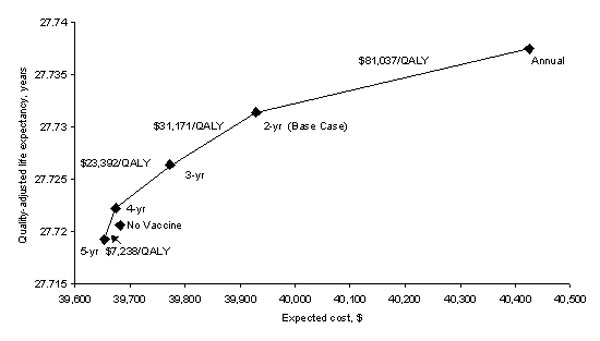Volume 9, Number 1—January 2003
Research
Cost Effectiveness of a Potential Vaccine for Human papillomavirus
Figure 5

Figure 5. Sensitivity analysis: Frequency of Pap tests in vaccinated women. Effect of changing the frequency with which vaccinated women receive a Pap test. The diamonds represent Pap testing vaccinated women annually, every 2 years (base case), every 3 years, every 4 years, and every 5 years. The x-axis represents the lifetime expected cost of the vaccination strategy; the y-axis is the quality-adjusted life expectancy in years. The incremental cost effectiveness of increasing the frequency of Pap testing for vaccinated women is indicated numerically above the cost-effectiveness frontier.
Page created: December 07, 2010
Page updated: December 07, 2010
Page reviewed: December 07, 2010
The conclusions, findings, and opinions expressed by authors contributing to this journal do not necessarily reflect the official position of the U.S. Department of Health and Human Services, the Public Health Service, the Centers for Disease Control and Prevention, or the authors' affiliated institutions. Use of trade names is for identification only and does not imply endorsement by any of the groups named above.